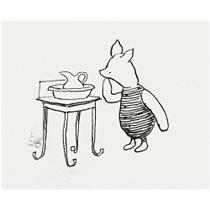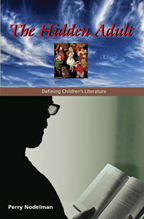Reason for Robin, #4, continued
 As I discussed in the weekly Robin of a fortnight ago, adding Dick Grayson/Robin the Boy Wonder to Batman's stories gave Bill Finger, Gardner Fox, and the comic's other early writers a broader emotional palette to work with.
As I discussed in the weekly Robin of a fortnight ago, adding Dick Grayson/Robin the Boy Wonder to Batman's stories gave Bill Finger, Gardner Fox, and the comic's other early writers a broader emotional palette to work with.
Mid-century ideals of American manhood constricted how much Bruce Wayne/Batman could emote. He could be momentarily puzzled, but not flummoxed. Proud, but not gloating. Regretful, but not tearful. Joking, but not straining for a pun. Robin, as a youngster, could show those "weaknesses," and in doing so raise the emotional timbre of the comic books. From the 1940s through the 1970s, Batman had the emotional range expected of a male paragon. He was usually happy, occasionally angry, and never out of control for long. Robin handled the extremes, and also expressed aspects of his mentor's private life that Batman wouldn't say out loud. The Batman TV show of the mid-1960s mirrored this dynamic, with Adam West performing to a different tempo from Burt Ward and everyone else in the cast.
From the 1940s through the 1970s, Batman had the emotional range expected of a male paragon. He was usually happy, occasionally angry, and never out of control for long. Robin handled the extremes, and also expressed aspects of his mentor's private life that Batman wouldn't say out loud. The Batman TV show of the mid-1960s mirrored this dynamic, with Adam West performing to a different tempo from Burt Ward and everyone else in the cast.
Then came DC's Crisis in 1985-86, followed by the death of the second Jason Todd as Robin in 1988. In the same decade, Frank Miller's The Dark Knight Returns showed the artistic and commercial appeal of a Batman who wasn't just out to scare criminals, but was just plain scary. Michael Keaton picked up on that personality in the 1989 movie blockbuster. And that produced a darker emotional dynamic for the Dynamic Duo. This image is from DC's online introduction to the character of Dick Grayson (art by George Pérez, words by Mark Waid). The "laughing young daredevil" matches how Robin was introduced back in 1940. But note also the unsmiling visage of his mentor, in contrast to his 1940 grin. This was the new face of Batman.
This image is from DC's online introduction to the character of Dick Grayson (art by George Pérez, words by Mark Waid). The "laughing young daredevil" matches how Robin was introduced back in 1940. But note also the unsmiling visage of his mentor, in contrast to his 1940 grin. This was the new face of Batman.
Since 1990 or so, Batman hasn't just been heroically stoic. He's psychologically shut down and closed off. He has terrible social skills, though Bruce Wayne can be suavely charming if he puts his mind to it. Batman has trouble expressing his feelings to even his closest companions. For all his physical and intellectual development, the modern Batman/Bruce Wayne is emotionally stunted. Today's Batman stories use this character in different ways. The TV cartoons and the magazines based on them (the "DC Animated Universe," or DCAU) are the lightest in tone. They play the emotional contrast between Batman and the rest of the world for laughs.
Today's Batman stories use this character in different ways. The TV cartoons and the magazines based on them (the "DC Animated Universe," or DCAU) are the lightest in tone. They play the emotional contrast between Batman and the rest of the world for laughs. Other Batman stories follow the old dynamic: Robin shows the emotions that Batman can't, as in the panel to the right, from the Knightfall story of the early 1990s. But now it's no longer admirable for Batman to keep his feelings bottled up. Instead, the biggest ongoing challenge for Dick Grayson and the current Robin, Tim Drake, as traced in their soon-to-end solo magazines, has been to avoid becoming as grim as their mentor.
Other Batman stories follow the old dynamic: Robin shows the emotions that Batman can't, as in the panel to the right, from the Knightfall story of the early 1990s. But now it's no longer admirable for Batman to keep his feelings bottled up. Instead, the biggest ongoing challenge for Dick Grayson and the current Robin, Tim Drake, as traced in their soon-to-end solo magazines, has been to avoid becoming as grim as their mentor.
At the most extreme, several story arcs in the last fifteen years have shown Batman/Bruce Wayne on the verge of madness. Or even beyond it, as in the current "Batman RIP" arc that's made headlines around the world (just as DC Comics had hoped).
And what do the comic books repeatedly say has forced Batman to maintain his sanity? Having Robin at his side. Caring for young Dick Grayson, responding to his emotions, has supposedly helped Bruce Wayne since his third year of fighting crime. Tim Drake took up the mantle of Robin precisely because he saw Batman going crazy without a Boy Wonder. When Batman has shut himself down, as in the Bruce Wayne: Murderer arc, Dick and Tim challenge him to reconnect with the people around him. In sum, DC's writers have taken the emotional contrast between Batman and Robin established in the comic's first three decades, a contrast largely driven by the gender stereotypes of the time, and have developed deeper meaning from it.
In sum, DC's writers have taken the emotional contrast between Batman and Robin established in the comic's first three decades, a contrast largely driven by the gender stereotypes of the time, and have developed deeper meaning from it.









 It's been over a month since my
It's been over a month since my  By adding Robin, the creative team brought in a character who could show more emotions. Half of Batman's face is covered, while most of Robin's is visible, and the eyeholes in his mask can apparently change shape to express different feelings. (Of course, Batman's eyebrows have been known to show through his cowl when they're needed.)
By adding Robin, the creative team brought in a character who could show more emotions. Half of Batman's face is covered, while most of Robin's is visible, and the eyeholes in his mask can apparently change shape to express different feelings. (Of course, Batman's eyebrows have been known to show through his cowl when they're needed.) Thus, while Batman occasionally allowed himself some grim, determined pleasure, Robin expressed great joy in besting the bad guys. Even a little too much, as in the panel at top, from the first issue he appeared in. By the mid-1940s, Batman was grinning and cracking jokes during fight scenes as well, so the contrast between him and Robin on the pleasure side wasn't that big. But it remained wide when it came to other emotions.
Thus, while Batman occasionally allowed himself some grim, determined pleasure, Robin expressed great joy in besting the bad guys. Even a little too much, as in the panel at top, from the first issue he appeared in. By the mid-1940s, Batman was grinning and cracking jokes during fight scenes as well, so the contrast between him and Robin on the pleasure side wasn't that big. But it remained wide when it came to other emotions. Batman could reproach himself for making a mistake, but the comics couldn't show him breaking down without lessening his status as a manly hero. In contrast, the Boy Wonder could fall to pieces for a while, and most readers would accept that because they knew he was still growing, like themselves.
Batman could reproach himself for making a mistake, but the comics couldn't show him breaking down without lessening his status as a manly hero. In contrast, the Boy Wonder could fall to pieces for a while, and most readers would accept that because they knew he was still growing, like themselves. In some stories Robin even expressed Batman's troubled emotions for the reader since the Caped Crusader was too stoic to emote himself. And of course that amplified the dire nature of their situation.
In some stories Robin even expressed Batman's troubled emotions for the reader since the Caped Crusader was too stoic to emote himself. And of course that amplified the dire nature of their situation.











